

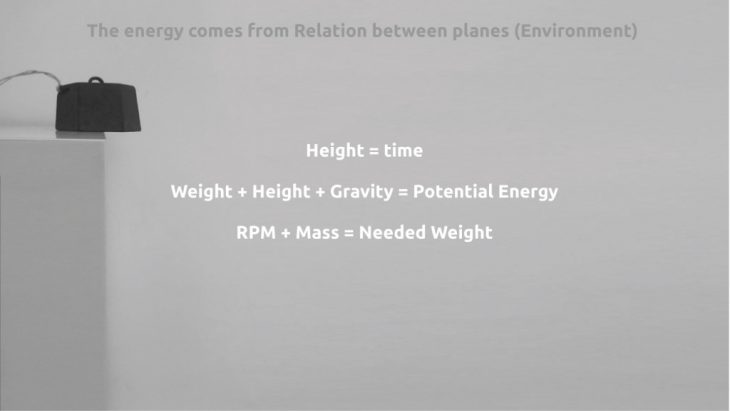 This is basically a system that has all its components and variable fixed, except one – where do we place our energy source (the weight) – in space. This will produce different patterns of action according to the planes- highest lowest and receiving plain of the material.
This is basically a system that has all its components and variable fixed, except one – where do we place our energy source (the weight) – in space. This will produce different patterns of action according to the planes- highest lowest and receiving plain of the material. As we explained in the video we are dealing with environments. So what is our Environment? Our machine is producing these environments. But, we consider it to be an environment for itself…an architectural one.
As we explained in the video we are dealing with environments. So what is our Environment? Our machine is producing these environments. But, we consider it to be an environment for itself…an architectural one.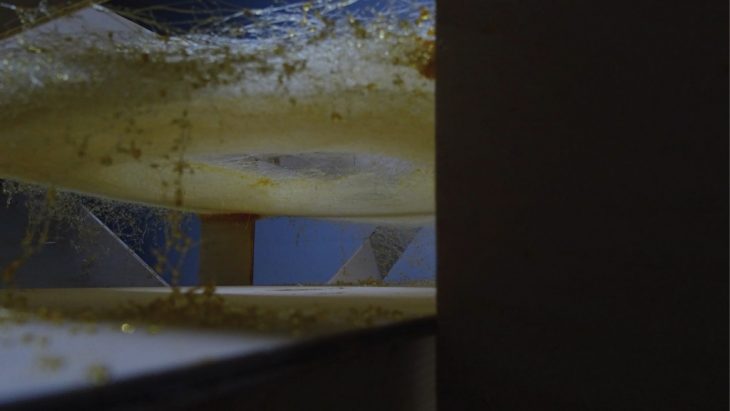 Sometimes the environments created by the machine, merge with it and become one. A place inside of a place.
Sometimes the environments created by the machine, merge with it and become one. A place inside of a place. This is a shape, a volume, that stores energy and time
This is a shape, a volume, that stores energy and time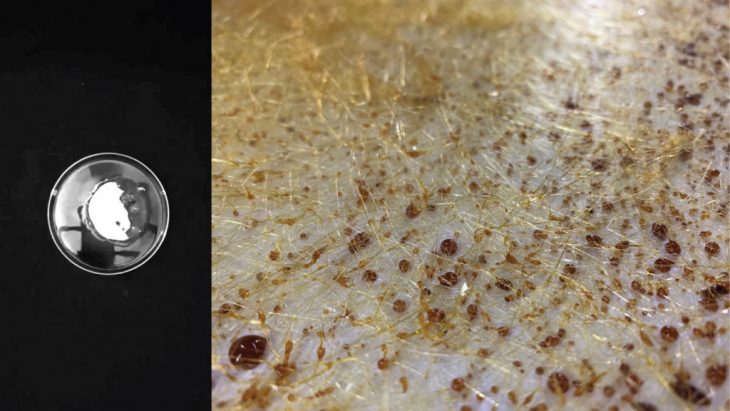 The Machine creates this magic- its a side effect of the material we are using
The Machine creates this magic- its a side effect of the material we are using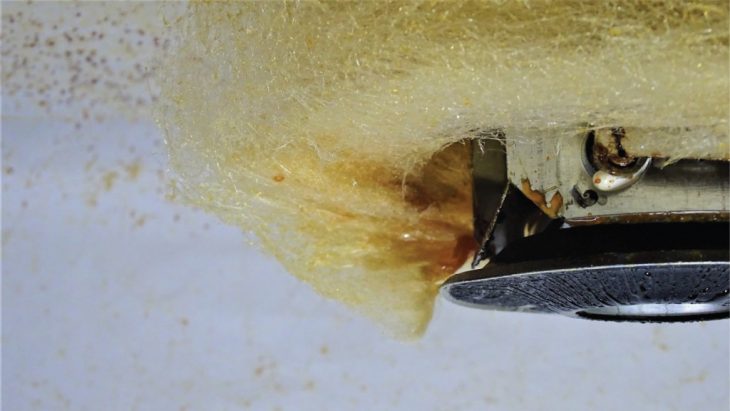 Soon enough we started to create volumes and shapes
Soon enough we started to create volumes and shapes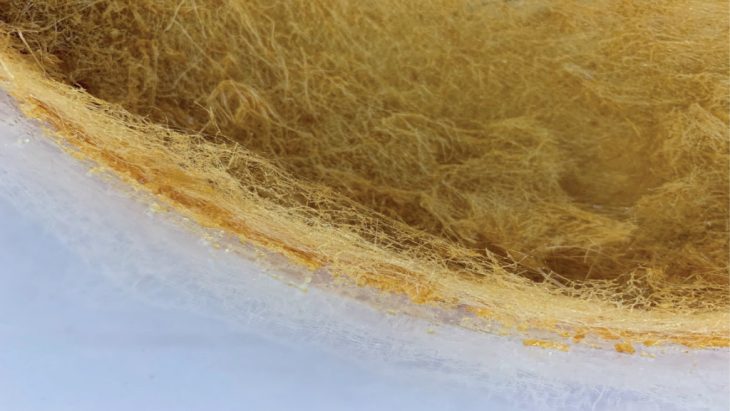 Looking closer we can see textures
Looking closer we can see textures

Terrains and structures that became more and more Architectural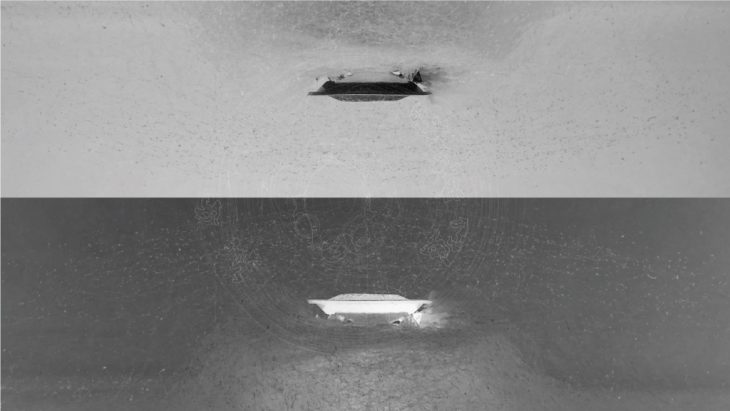 We fell in love, and got more curious about what can happen, so we kept pushing even further
We fell in love, and got more curious about what can happen, so we kept pushing even further 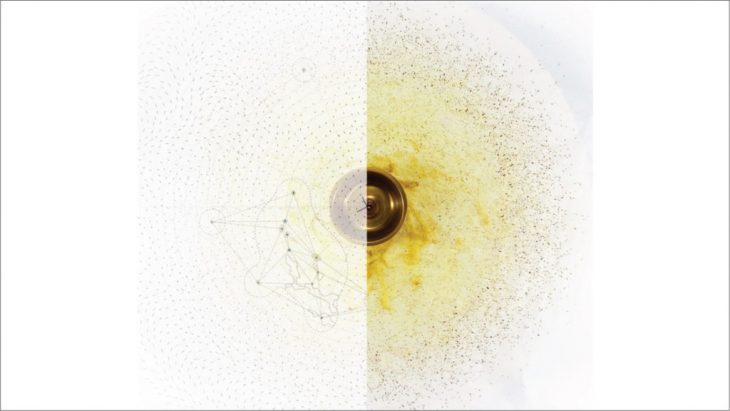 By introducing these patterns, structures and volumes to the computer, we started to analyze and show the energy map and distribution of the material
By introducing these patterns, structures and volumes to the computer, we started to analyze and show the energy map and distribution of the material
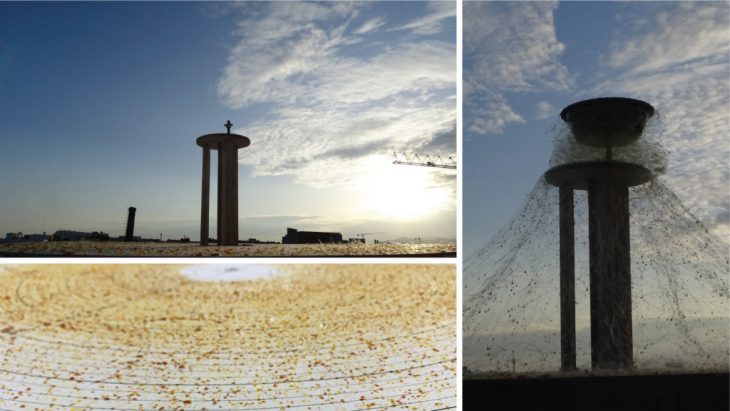 Taking this environment, this machine, and going higher – literally. We were exploring the relationship between height, energy and time…
Taking this environment, this machine, and going higher – literally. We were exploring the relationship between height, energy and time… The tension between up and down started to appear as we let the machine create the environment it was interacting with
The tension between up and down started to appear as we let the machine create the environment it was interacting with 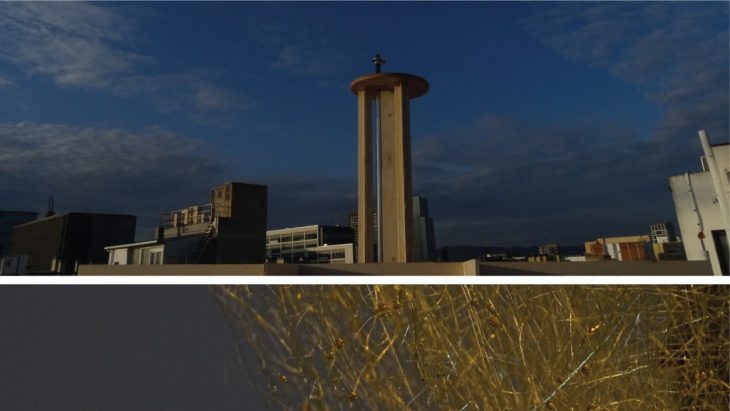 The question about what was creating what?
The question about what was creating what?
started to appear and the machine became more and more a part of its surroundings, but also creating it  So we guess you are asking how is it made…
So we guess you are asking how is it made… This is how it looks like. This is the real thing. After many models, mockups and tests we got to this
This is how it looks like. This is the real thing. After many models, mockups and tests we got to this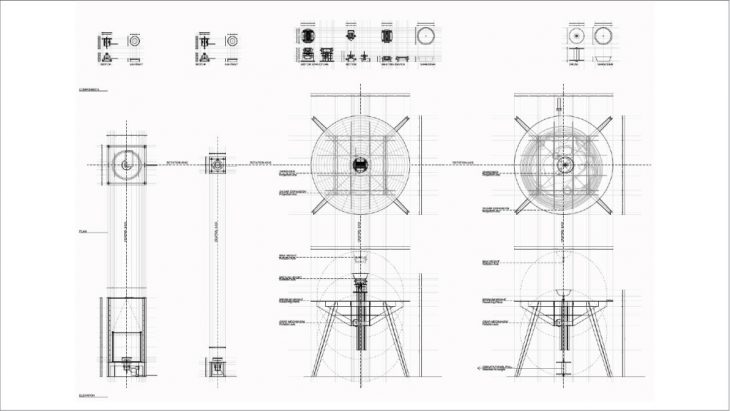 The evolution of machine construction was long and ran alongside the whole process involving many different designs to make the machine more precise
The evolution of machine construction was long and ran alongside the whole process involving many different designs to make the machine more precise
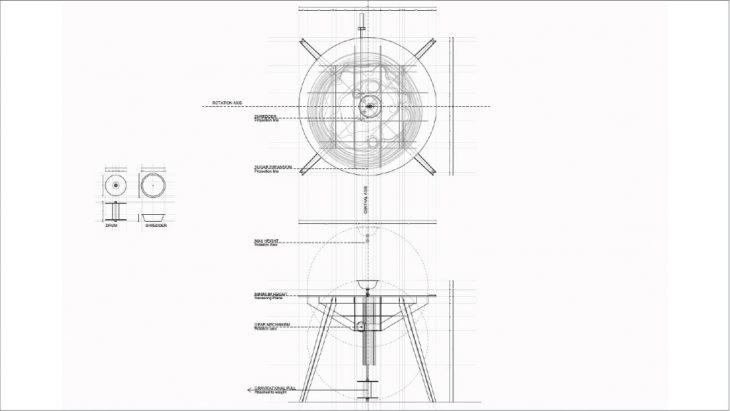 Our machine has 4 main parts:
Our machine has 4 main parts:
- Machine body made out of 4 mm plywood
- The Shredder -that spreads the material
- Height mechanism- to change the shredders height
- And the engine/power


Over time we developed a set of different tools and a system that helps us to experiment
In order to show and understand the relationship between the change of space and the energy output along time we compute the experiments to get more accurate results.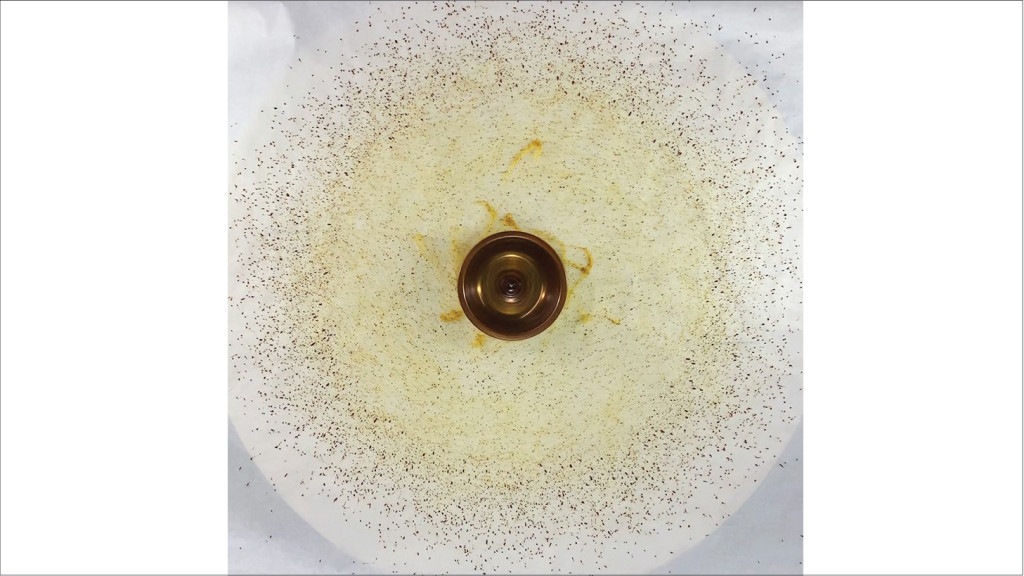 In this image we can see one of the frames used in the computational analysis for us to demonstrate how the analysis and logic was made
In this image we can see one of the frames used in the computational analysis for us to demonstrate how the analysis and logic was made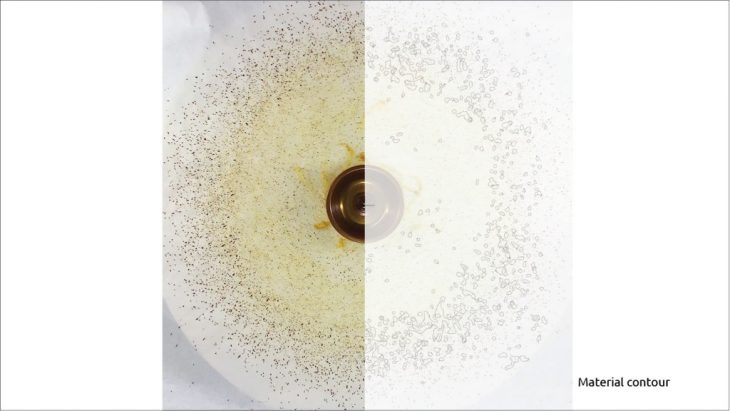 We started to compute the contours of the material as it touches the receiving plane.
We started to compute the contours of the material as it touches the receiving plane.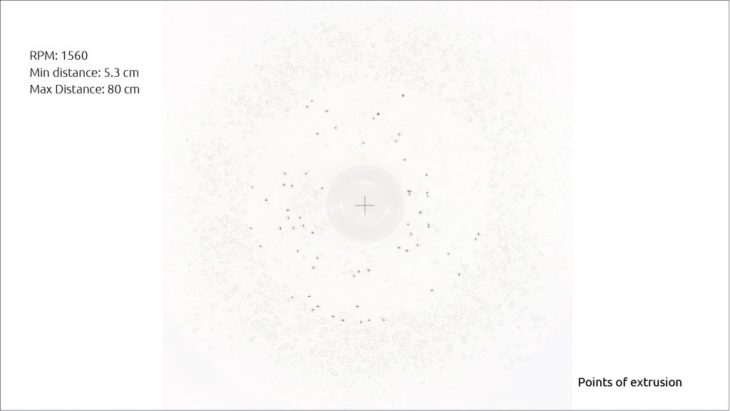 Then, by taking the center point of each contour we were able to get the distance from the center to each point. At this point we could understand the relation between the rotation speed and the distance it shoots the material.
Then, by taking the center point of each contour we were able to get the distance from the center to each point. At this point we could understand the relation between the rotation speed and the distance it shoots the material.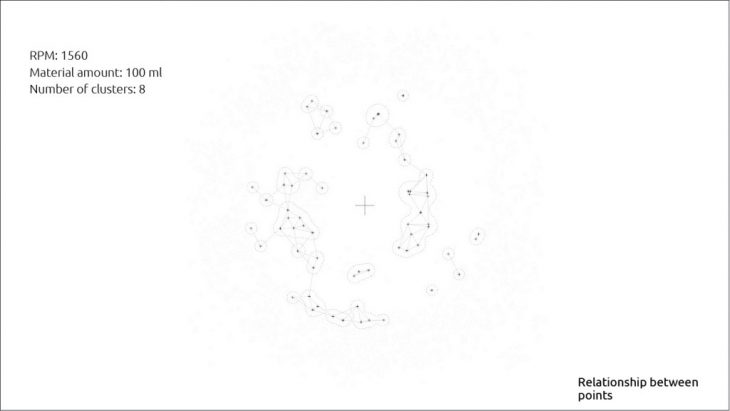 Then get the relationship between the points according to proximity , to later being able to get the path of inertia of those points, given by the centrifugal force in within. This to visualize how and where does the volume starts building up
Then get the relationship between the points according to proximity , to later being able to get the path of inertia of those points, given by the centrifugal force in within. This to visualize how and where does the volume starts building up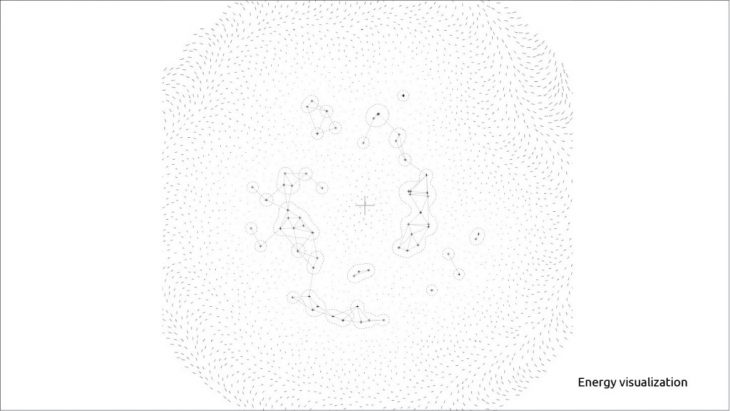 we were also able to visualize the energy flow in the empty space, according to the movement and the accumulation of the material along the surface.
we were also able to visualize the energy flow in the empty space, according to the movement and the accumulation of the material along the surface.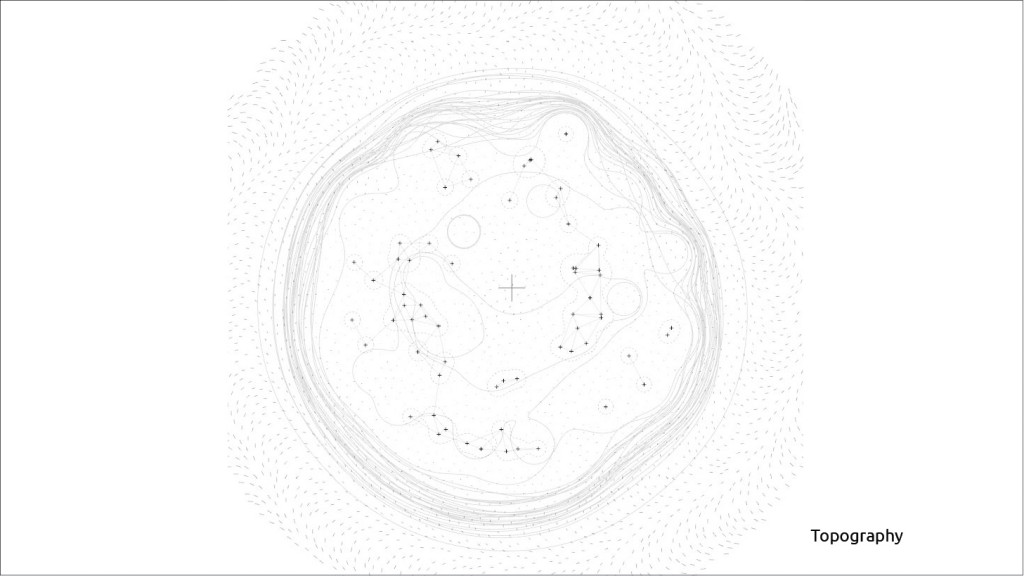 Finally we could see the volume output of the whole process of each experiment, as an environment of its own. ¿Drawing? it as a topographic landscape.
Finally we could see the volume output of the whole process of each experiment, as an environment of its own. ¿Drawing? it as a topographic landscape. This drawing Shows us the relationship between the Computational side to the machine
This drawing Shows us the relationship between the Computational side to the machine 
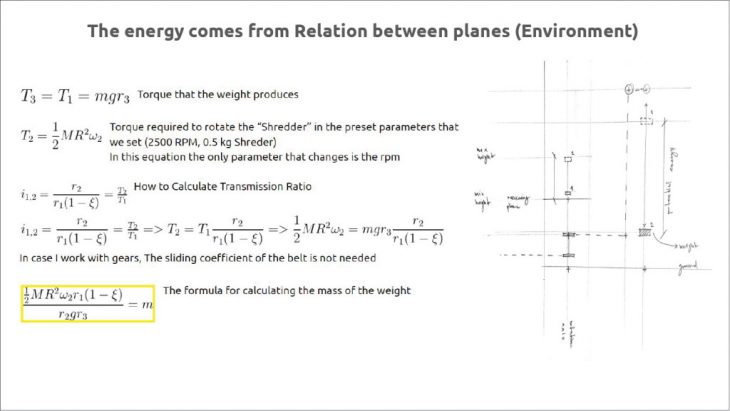 Behind the scenes are Lying layer of calculations and drawings. We calculated energy to run the machine to get the data we need to disconnect from the electricity, and to accurately enter information into the computer
Behind the scenes are Lying layer of calculations and drawings. We calculated energy to run the machine to get the data we need to disconnect from the electricity, and to accurately enter information into the computer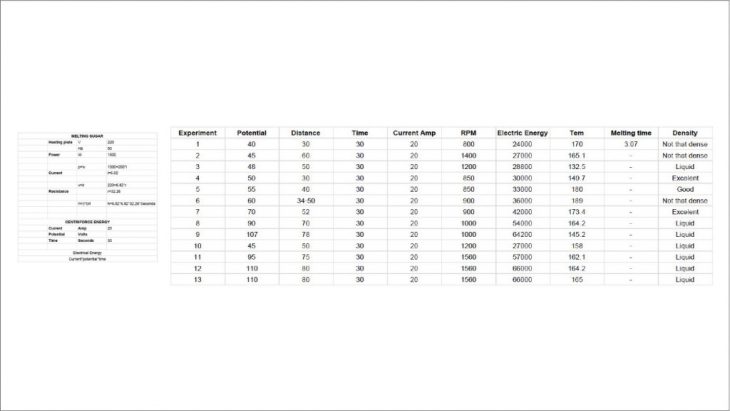 Here is the data that was collected from some experiments
Here is the data that was collected from some experiments 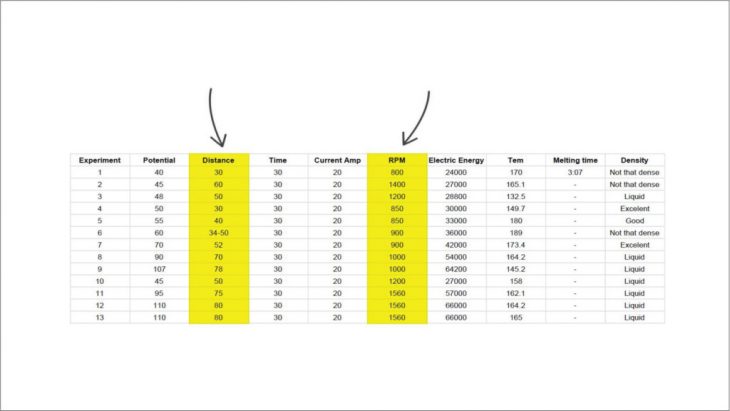 Proving the direct relationship between energy and distance and size of shape
Proving the direct relationship between energy and distance and size of shape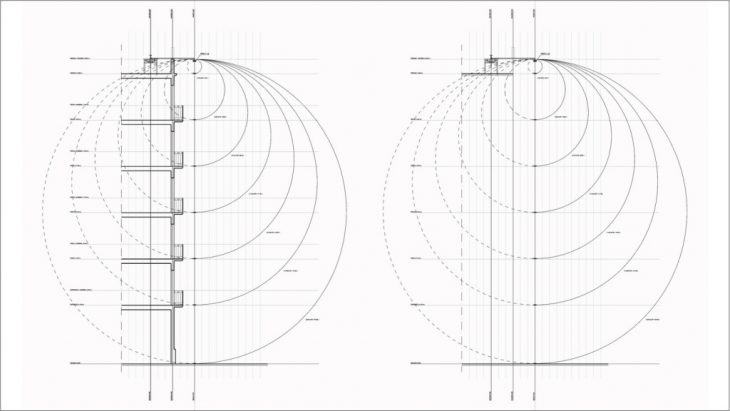 Here we can see a section of my building and the way the position of our weight is giving the amound of
Here we can see a section of my building and the way the position of our weight is giving the amound of 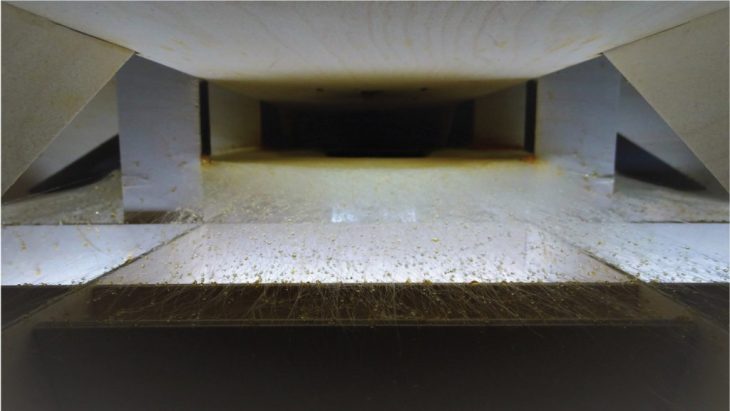
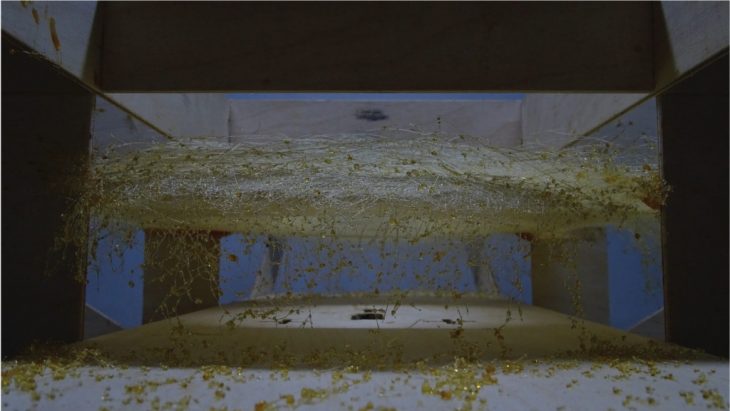
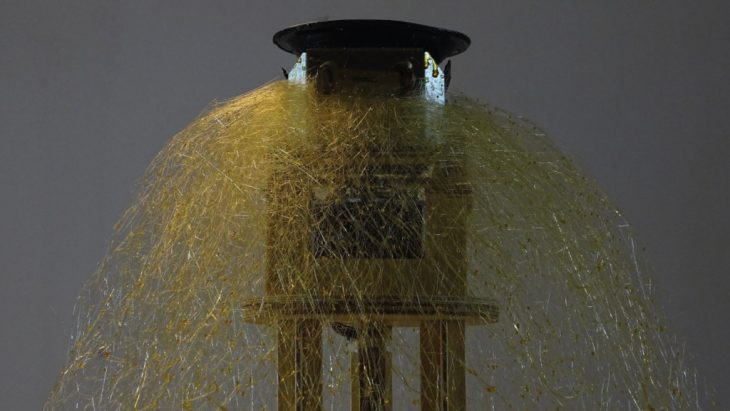
 The process
The process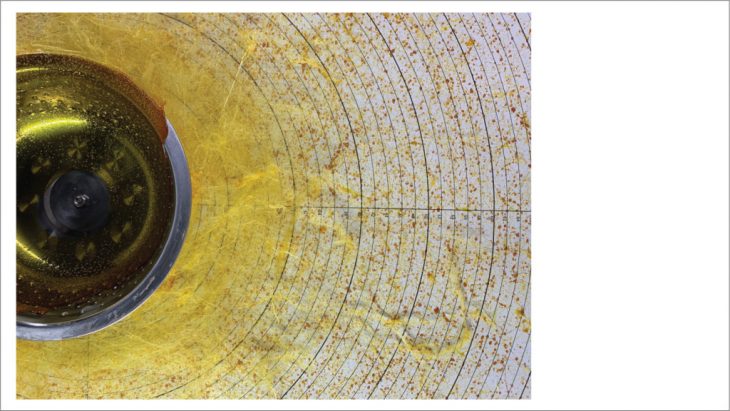 Outcome
Outcome
 Self Sufficient Buildings
Self Sufficient Buildings
Envisioning energy
Faculty: Edouard Cabay, Peter Geelmuyden Magnus, Oana Taut
Students: María Andrea Gameros, Bruno Ganem Coutinho, Daniel Nahmias
Special thanks: Marcus Frieze For the Voice-over
IAAC 2020
